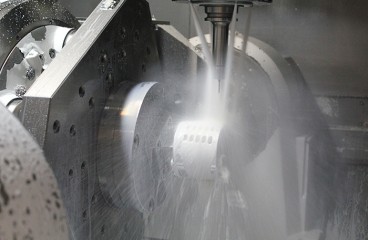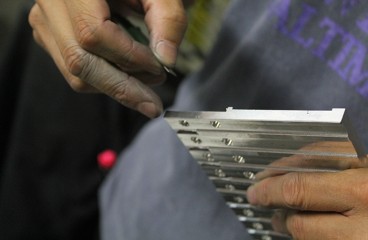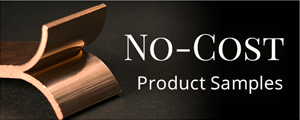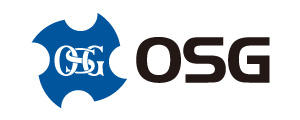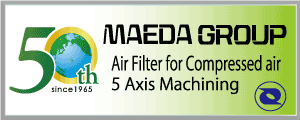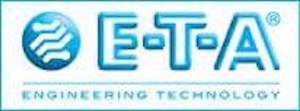Rapid Prototyping of Precision Machining
HILLTOP Technology Laboratory, Inc. View Company Info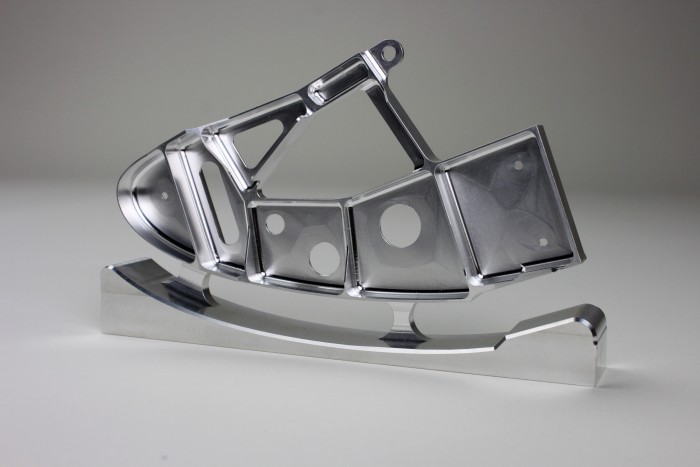
Since their establishment as a manufacturer for auto parts, HILLTOP Technology Laboratory, Inc. has been growing rapidly specializing in prototyping aluminum products. Its conception of a cutting edge production framework has attracted the attention of manufacturing companies across Japan. Their specialty is to create one-off product such as prototypes for new machines and devices, artist’s and designer’s works, and custom-made components. They can provide you with exactly what you want in shortest delivery time. Our standard turn-around is 5 days.
High Precision CNC Machining
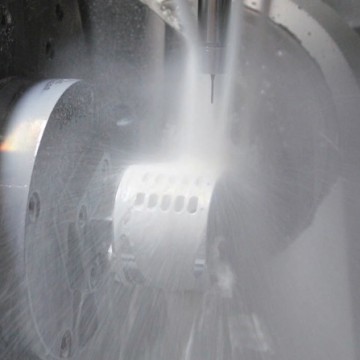 Global Innovation
Global Innovation
Since their establishment as a manufacturer for auto parts, Yamamoto Seiko Co., Ltd. has been growing rapidly specializing in prototyping aluminum products. Its conception of a cutting edge production framework has attracted the attention of manufacturing companies across Japan. Departing from its home ground of Kyoto, Japan, the next market the company sets its sights on was neither China nor Southeast Asia, but the US West Coast. General Manager Yuki Yamamoto and Spokesman Kohei Naruse spoke on the subjects of why the company has chosen the US as their next field, and the competition Japanese manufacturing SME face in the US.
Achieving Faster Delivery Time and Improved Quality Through Complete Separation of Office and Plant
– Your company specializes in aluminum prototyping and producing small quantities of a large variety of products.
Mr. Yamamoto: Yes. Almost 80% of the orders we fill are very small lot productions of about one or two units. Most of these products are made through automated production overnight. In the past, we were a subcontract factory mass -producing auto parts, but for the past 25-30 years, we have shifted our focus on aluminum prototyping. Our goal is to work at the source of manufacturing.
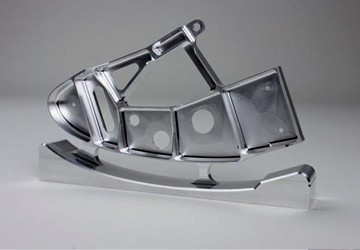
– How are the skills of your craftsmen reflected in this fully automated production environment?
Y: There was a time when we had a factory-oriented policy placing the most importance on the craftsmen. They were the ones operating the machinery, and I believe this is standard practice in manufacturing. However, since our shift to specializing in prototypes, we have gone through many changes. Currently we operate on the idea that once human workers finish programming data and information using computers, the rest of the manufacturing process can be done by machines.
– In other words, all that needs to be done at the worksite is to input data following instructions?
Y: That is correct. Our manufacturing know how and technological knowledge mostly come into play at the time of programming. This is our in-house project called the Operation List Concept, and it took us a year’s time to complete. Through digitization of our technological know how and program optimization, we are able to have this information reflected in the programming process. We focus most of the wisdom and ability of the company on the programming, and not on the manufacturing site. This complete separation of the office and its programming, from the plant allows us to manufacture products with precision and quality through the simple process of handing over program data.
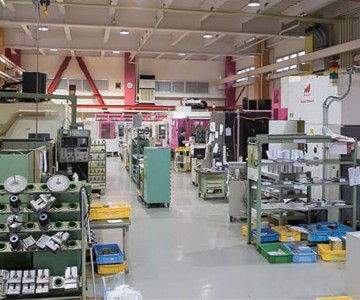
– I am told that the fall of Lehman Brothers prompted this Operation List Concept.
Y: The number or incoming orders dropped significantly at that time, and we predicted that subcontractors would take a hit regardless of the company’s performance. This situation leads to the birth of the Operation List Concept. Mr. Naruse: Through the separation of the office and the plant, we were able to achieve faster programming speeds while allowing new employees to function in the work place quicker. Since the implementation of this system, our programming speed tripled, and our new employees are able to program for five-axis machinery in only 1-1.5 months.
– Are there no craftsmen in the plant?
You: Actually, we have many on the site. In order for a program to capture a craftsman’s experience, intuition, and knowledge, we must first go through the process of digitizing these aspects. This process requires a pure hands-on approach, and we also need craftsmen to contribute their skills to the improvement of the plant. In order to have an unmanned production process, we must first rely on the skill of the craftsmen. The only difference is that their roles have changed.
Rising to the Challenge of the Top-tier Manufacturing Market
– As you decided to set up your office in the US, were Tokyo, China, or Southeast Asia, which has been gaining attention recently, not considerations?
Y: Actually, there was a plan to set up a base in Tokyo first. Advancing to the US was scheduled to be next, and both of these projects were in motion simultaneously. However, our plans were halted by the Great East Japan Earthquake. While we were initially targeting the prototyping market for new product development within Japan, we have since shifted our priorities to the challenge of exploring new markets overseas. N: The Silicon Valley is in the US, and being at the technological forefront, this is where manufacturers around the globe set as their goal for business. We wanted to test the strengths of our technology and service in this environment.”
– They say that “Made in Japan” works as a strong asset overseas. Did you have any interest in confirming this reputation?
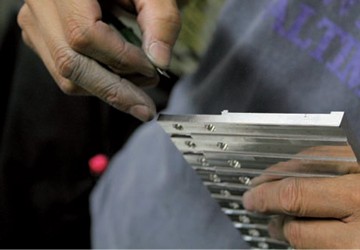 Y: Certainly. We opened our office in Orange County, California. The reason for this is that the outskirts of Los Angeles has four times the amount of businesses that Silicon Valley has, and of greater variety. In Kyoto, our clients include companies of diverse fields such as medical, aviation, precision mechanics, motorcycle racing and film. From the perspective of getting our company on a growth trajectory, we decided on Orange County because of the versatility that aluminum manufacturing offers, for anything can be made out of aluminum.
Y: Certainly. We opened our office in Orange County, California. The reason for this is that the outskirts of Los Angeles has four times the amount of businesses that Silicon Valley has, and of greater variety. In Kyoto, our clients include companies of diverse fields such as medical, aviation, precision mechanics, motorcycle racing and film. From the perspective of getting our company on a growth trajectory, we decided on Orange County because of the versatility that aluminum manufacturing offers, for anything can be made out of aluminum.
– There are two ways for Japanese companies to develop business overseas. The first is to set up a branch at the location, and the second is to use the Internet without opening an office. Why did you choose the former?
Y: Not setting up an overseas branch and relying solely on the Internet results in credibility issues. Having a local off ce allows us to gain trust and credibility, and to focus on customer service. It would be tough to compete with local businesses unless you have technology that is absolutely unique to your company. On the other hand, I believe companies possessing such technology would be able to compete globally without leaving Japan.
Challenging the Cost-over-Quality Mentality with “the Concept”
-When Japanese companies compete overseas, it seems that technology, quality and cost become central issues. What are some of the differences you’ve felt between Japan and the US?
Y: Overall, I feel that the manufacturing technology in the US isn’t as advanced as it is in Japan. Of course, there are some companies possessing technology that surpasses ours.
N: When discussing quality in the US, cost is still the priority. Of course products do have to be of minimum quality, but there isn’t as much extra value for products of extra high quality. Cost is the main concern in the US.
– Please elaborate on your advance into the US.
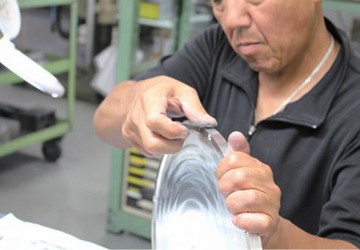 Y: We have a five-axis machine set up in the US, and the programming is done in Japan. Once we receive orders from American clients, we will create the programming data in Japan, and send the data and instructions back to the US through the Internet. In the US, the materials will be set in the machine, the five-axis machine will be programmed according to the instructions, and once the button is pressed, the product will be completed overnight through the unmanned production process. There is no need to have any craftsmen in the US. This allows us to manufacture using five-axis machinery with lower costs than US competitors.
Y: We have a five-axis machine set up in the US, and the programming is done in Japan. Once we receive orders from American clients, we will create the programming data in Japan, and send the data and instructions back to the US through the Internet. In the US, the materials will be set in the machine, the five-axis machine will be programmed according to the instructions, and once the button is pressed, the product will be completed overnight through the unmanned production process. There is no need to have any craftsmen in the US. This allows us to manufacture using five-axis machinery with lower costs than US competitors.
– In other words, you export only the factory side of your Kyoto headquarters.
Y: Exactly. Originally this system of separating the office and the plant was a product of our quest for quality and speed within the Japanese market. However, in the US, the exact same system allows us to perform at lower costs. Of course we hadn’t thought of this during the conception of our system.
New Projects World Wide; Advancing to the Silicon Valley
Your newer ventures, such as the production and retail of jigs and image inspector must receive a great deal of inspiration and momentum from your move to the US.
N: Silicon Valley has many talented workers, and we hope to take advantage of this local talent in the future through our apparatus development. Such a location which is at the forefront of technological growth attracts workers of the highest caliber.
Y: The development team members are gaining more experience, and given the possibilities of collaboration with Silicon Valley startups, it would be great if we could develop new products the world has never seen. Expansion alone isn’t as interesting.
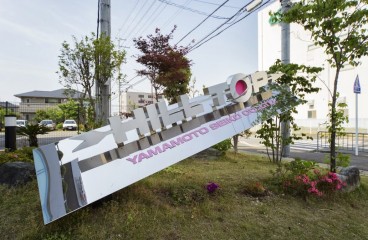
HILLTOP Technology Laboratory, Inc.
Business Description : precision parts, product development, Surface treatment?
Headquarters Address: 1-30 Narute Okubo-cho Uji-city, Kyoto, 611-0033, Japan
President & CEO : Masanori Yamamoto
Established : 1980
Number of Employees : 65
Website :hilltop21.com/


